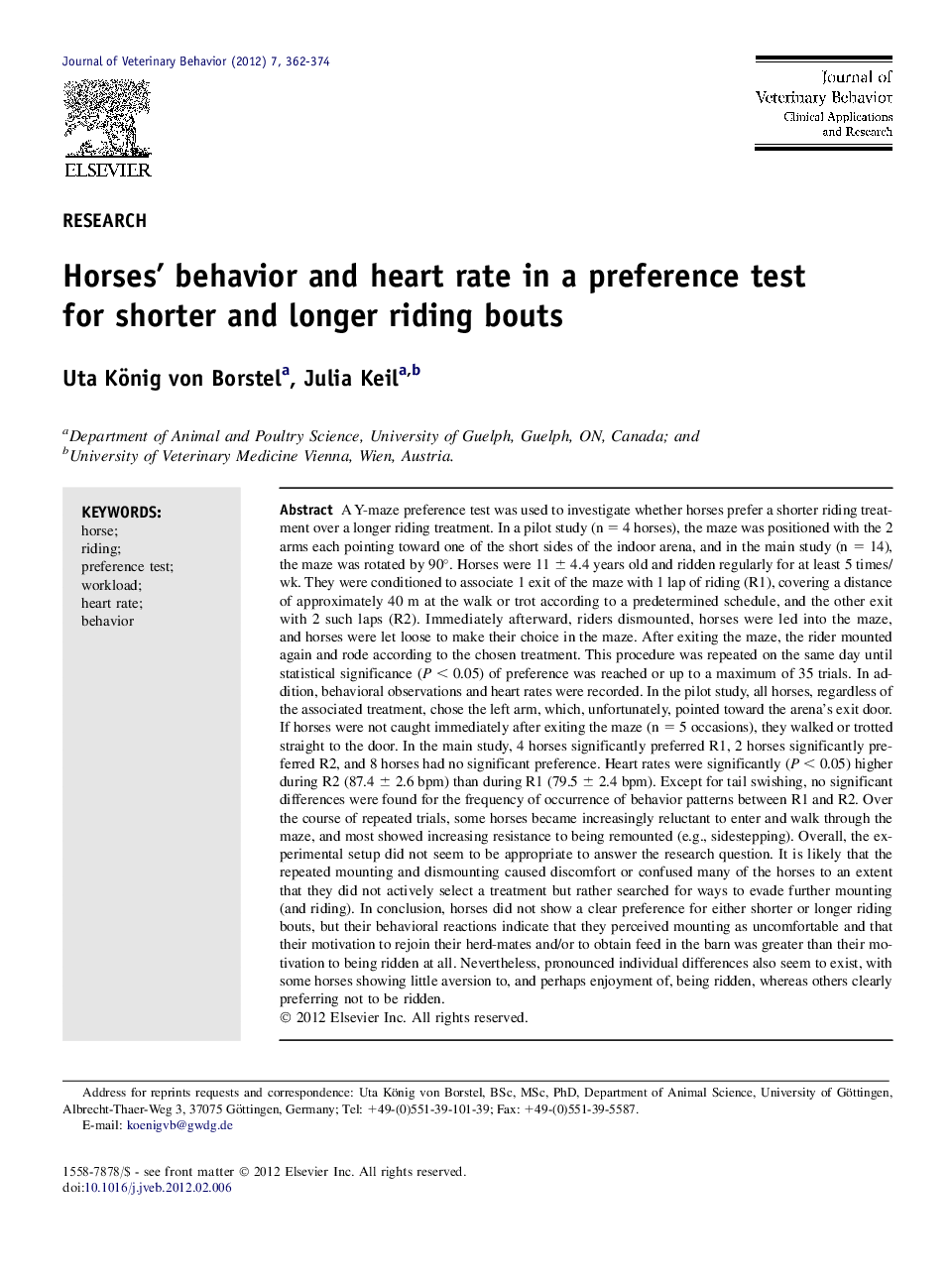| کد مقاله | کد نشریه | سال انتشار | مقاله انگلیسی | نسخه تمام متن |
|---|---|---|---|---|
| 2399055 | 1102031 | 2012 | 13 صفحه PDF | دانلود رایگان |

A Y-maze preference test was used to investigate whether horses prefer a shorter riding treatment over a longer riding treatment. In a pilot study (n = 4 horses), the maze was positioned with the 2 arms each pointing toward one of the short sides of the indoor arena, and in the main study (n = 14), the maze was rotated by 90°. Horses were 11 ± 4.4 years old and ridden regularly for at least 5 times/wk. They were conditioned to associate 1 exit of the maze with 1 lap of riding (R1), covering a distance of approximately 40 m at the walk or trot according to a predetermined schedule, and the other exit with 2 such laps (R2). Immediately afterward, riders dismounted, horses were led into the maze, and horses were let loose to make their choice in the maze. After exiting the maze, the rider mounted again and rode according to the chosen treatment. This procedure was repeated on the same day until statistical significance (P < 0.05) of preference was reached or up to a maximum of 35 trials. In addition, behavioral observations and heart rates were recorded. In the pilot study, all horses, regardless of the associated treatment, chose the left arm, which, unfortunately, pointed toward the arena's exit door. If horses were not caught immediately after exiting the maze (n = 5 occasions), they walked or trotted straight to the door. In the main study, 4 horses significantly preferred R1, 2 horses significantly preferred R2, and 8 horses had no significant preference. Heart rates were significantly (P < 0.05) higher during R2 (87.4 ± 2.6 bpm) than during R1 (79.5 ± 2.4 bpm). Except for tail swishing, no significant differences were found for the frequency of occurrence of behavior patterns between R1 and R2. Over the course of repeated trials, some horses became increasingly reluctant to enter and walk through the maze, and most showed increasing resistance to being remounted (e.g., sidestepping). Overall, the experimental setup did not seem to be appropriate to answer the research question. It is likely that the repeated mounting and dismounting caused discomfort or confused many of the horses to an extent that they did not actively select a treatment but rather searched for ways to evade further mounting (and riding). In conclusion, horses did not show a clear preference for either shorter or longer riding bouts, but their behavioral reactions indicate that they perceived mounting as uncomfortable and that their motivation to rejoin their herd-mates and/or to obtain feed in the barn was greater than their motivation to being ridden at all. Nevertheless, pronounced individual differences also seem to exist, with some horses showing little aversion to, and perhaps enjoyment of, being ridden, whereas others clearly preferring not to be ridden.
Journal: Journal of Veterinary Behavior: Clinical Applications and Research - Volume 7, Issue 6, November–December 2012, Pages 362–374